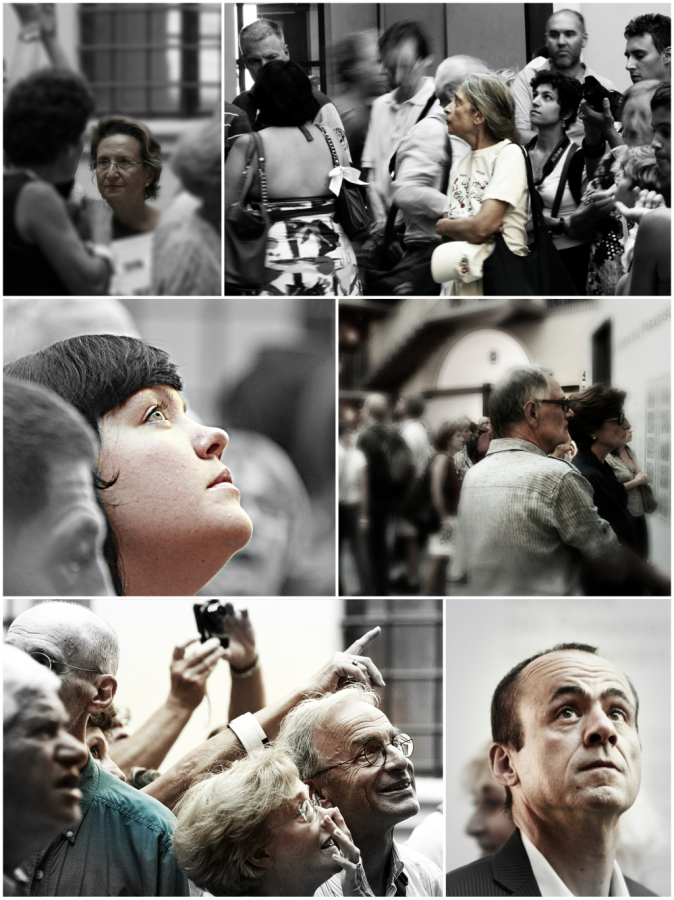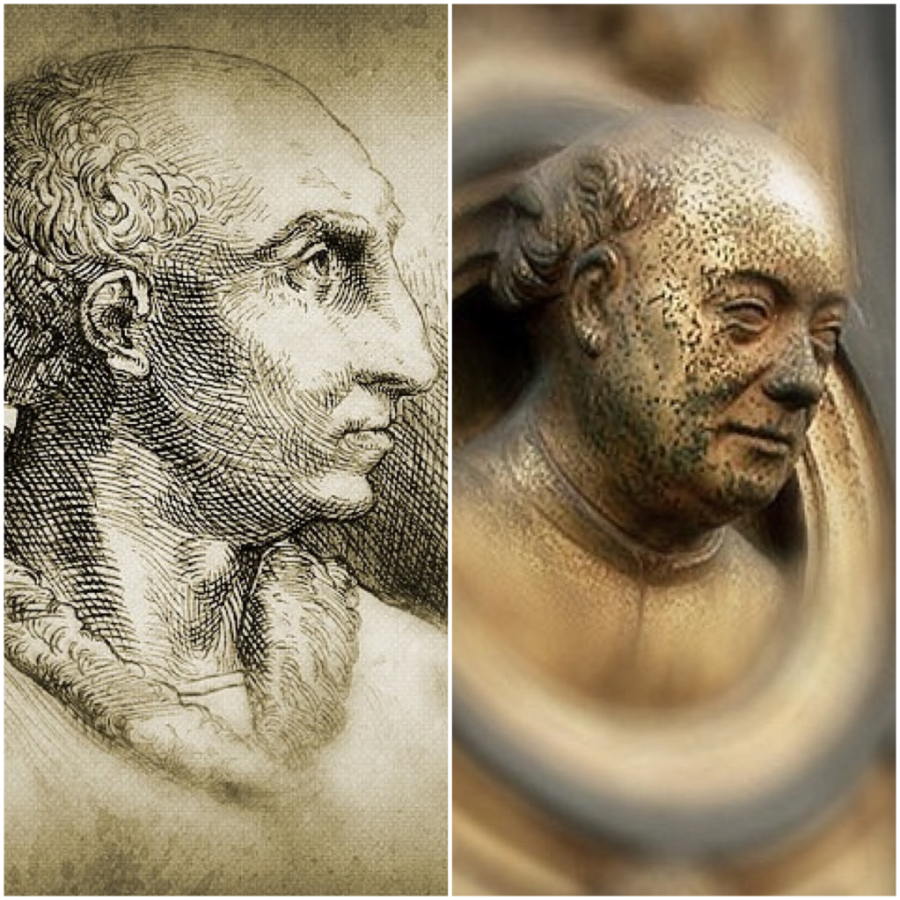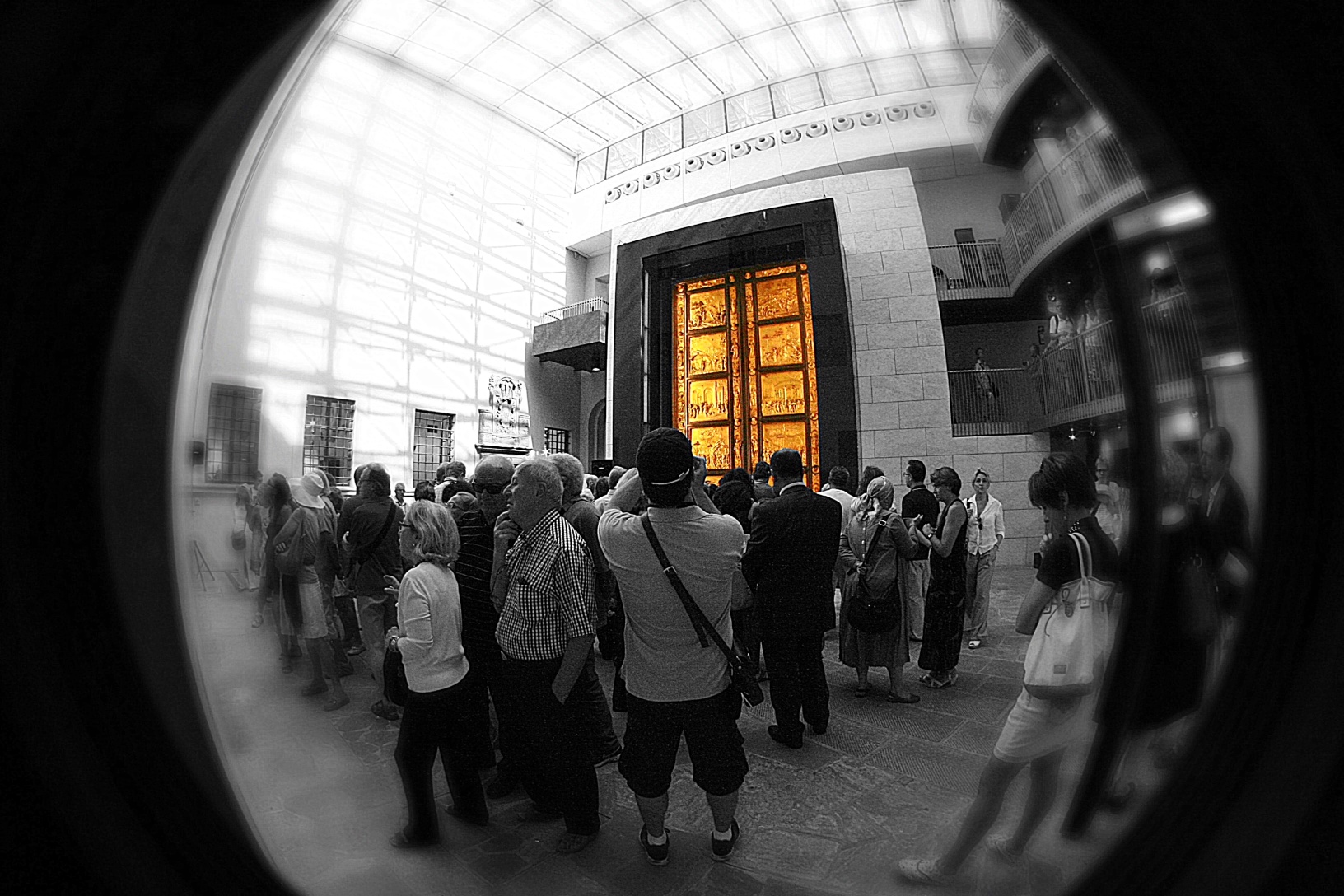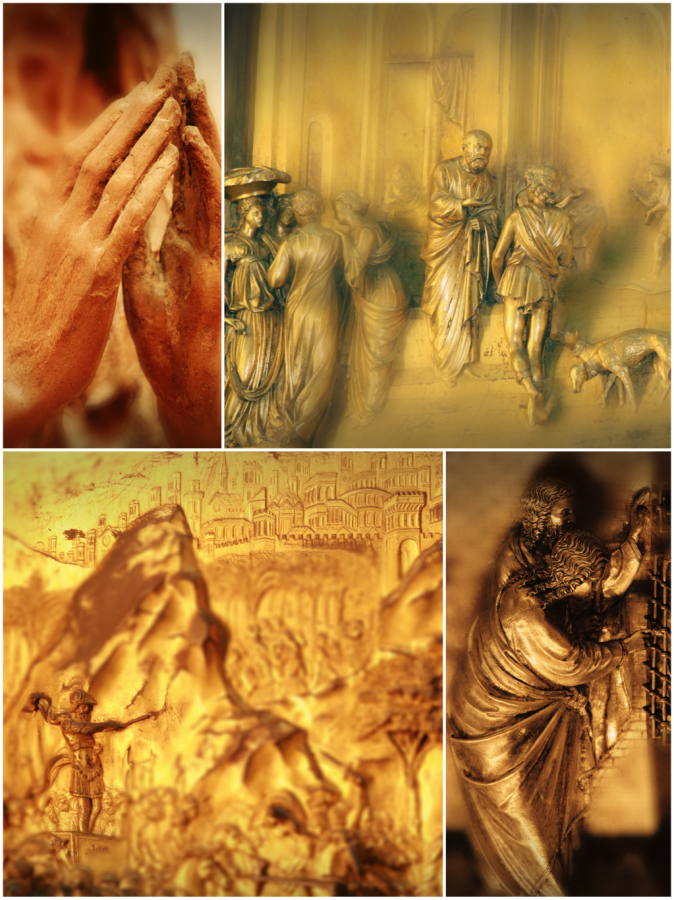Ghiberti Florence Baptistry Doors Restored – Copies vs Originals
‘Non si frigge con l’acqua’ or, translated; ‘We don’t fry with water’, is a Tuscan saying I have heard frequently recently. It is often quoted to me in response to my expressing admiration for something, be it a newly created culinary delight, the efficient organisation of a plan or perhaps even after someone has come up with a particularly cunning plan. In Tuscany, the Italian spiritual home of olive oil, the understanding is that, here one fries with oil as opposed to water, something that doesn’t really achieve a great deal. It is somewhat ironic then that it took until last week, the 8th of September, for the 27 years in waiting, restoration of the Baptistry Doors by the Florentine Renaissance master Lorenzo Ghiberti to be completed. Much of the much needed restoration was caused in fact by water during the famous 1966 floods and one cannot help but wonder, whether in the case of Ghiberti’s doors and the time taken to restore them, the industrious Tuscans, have been frying with it ever since. However, the restoration is complete and the doors, for which Michelangelo so famously coined the nickname ‘The Gates of Paradise’ in reference to their beauty are once more on display in the Museo del Opera, Florence in Florence, Italy.
The doors have been brought back to their 15th C splendour and now beautifully displayed in a weather proof, well lit, easily viewed room in a museum, where they can survive for generations to come. Great news no doubt, but as with much Western art, they are now, though preserved, totally out of context, copies instead hang in their place on the hinges of the bapistry where Ghiberti intended his doors to be seen and serve their purpose. This raises a rather interesting issue – given the chance to see only one – is it in fact better to see the copy? To what extent does this dislocation of art, remove too much of its original meaning. Are we in fact losing a vital dimension in our understanding by this viewing in isolation?
The Baptistery of San Giovanni (St John the Baptist) has always been crucial to Florentines, who for more than 500 years have honoured their city’s patron saint with a huge party every 24th June. Once its famous doors were virtually seen as the literal gates to heaven – any newborn baby who would die prior to being baptised was said to go straight to purgatory. Lorenzo Ghiberti, after ousting five rivals for the commissioning of the doors, among them Brunelleschi of later dome fame, completed them to much acclaim after 27 years in 1452. As was a tradition of the times, a competition had been launched in order to decide to whom the honour, not to mention, the Florins for the design would go. The commission chose Ghiberti’s ‘fresh’ design over the more traditional, angular, old fashioned Gothic designs of Brunelleschi. Michelangelo, 50 or so years later, gave Ghiberti’s doors his seal of approval when asked to comment, declaring them to be ‘as beautiful as the gates of Paradise themselves’.
Dislocation or not, in fairness the Florentines had no choice but to act, were they to preserve their prized civic treasures. Cristina Acidini, whose seventeen word Italian title losely translates as Responsible for Florentine Heritage, makes it clear that ‘though the doors were admittedly destined for the open air, today they cannot co-exist with this open air’. It is hoped they will be displayed in a specially designed new wing by 2015.
Italy is often described as an open-air museum. Many of its celebrated works of art stand in streets and famous piazzas where they are highly vulnerable, not only to the elements, but also rather more tragically to acts of vandalism. Nowhere is this more so than in Florence, where Michelangelo’s David in its original location as a symbol of civic pride in the main square, was vandalised before being moved in 1873. This however did not prevent further attacks, noticeably in 1995 when, even inside the museum, a toe was hacked off, and where back in the square, only a few years ago a plaque, marking the site of the burning of Savonarola was graffitied with a big black ‘x’. I read a statistic once along the lines of ‘for each of the roughly 60 or so million Italians, there are 3.5 priceless pieces of art’. Who does that sort of math, I don’t know, but, short of placing originals under 24 hour surveillance – which has often been done – measures are required to protect what is after all our common heritage. Measures and money.
But can an ‘isolated’ original, no matter how beautiful, restored and easily visible, re-capture the full meaning of that same original in its intended context? Arthur Danto in his text ‘The Transfiguration of The Commonplace’ speaks of ‘mimemes’ which he coins as a term for anything imitating an original. In this case the bronze doors, copies, though beautiful much-heralded copies, are mimemes of the original. Our judgements of art are influenced to a large extent by the philosophy of Plato (The Allegory of the Cave or The Divided Line) in which anything less than the original, ‘eidos’ will never be more than a resemblance and something of a deception or ‘eikos’. Both would have us value the original always over the copy.
The first comment of my guide and photographer when she saw the doors up close was ‘there is just so much more detail in the original and the copies are considered extremely accurate, but this is so much better’. Well, she is a city guide with an art degree and her joy at seeing them was evident. But to ‘my’ tourists? Will I now start taking them to The Museo del Duomo? Will they want to? I am certain many city guides neglect to inform their groups, for various reasons, as they jostle for position outside the baptistery, that these are in fact copies. And I am equally certain when they are not told, the vast majority do not realise this is the case. Much of our art is placed and viewed totally outside its historical context be it in the Louvre, the Uffizi or the British Museum. I believe this dislocation removes a crucial element from our understanding. When copies are well executed and clearly identified as such, they do have their place unquestionably.
Florence receives an estimated 7 million tourists per year. The most visited of its museums is the famous Renaissance treasure trove, The Uffizi with 1.5 million visitors. I think it’s safe to assume The Accademia, housing the original David comes next, then perhaps the Bargello and Palazzo Pitti on the much less visited, but incredible, South side of the Arno River. Without having the figures to hand it must nonetheless be fewer than one in ten tourists (and I imagine far fewer) who visit the Museum of the Duomo to see the original door bronze panels on display. Therefore, 90 percent of visitors to Florence, surely all of whom at least follow their guide books to the ‘Gates of Paradise,’ are totally satisfied with the ‘copy’ and see no need to fork out the entrance fee for the originals.
The city of Florence, like so many others, has no choice. We have created cities where both our values and air quality no longer permit such treasures as the Ghiberti doors to be on public display in their original location. The long-awaited restoration has saved this masterpiece for future generations at the inevitable cost of removing it from its context. There was a line of people queuing to enter and appreciate the unveiling last week. New life has been breathed into his doors in their new, somewhat sterile setting, but one cannot escape the fact that the doors which once lead to Paradise today lead nowhere. Where do they lead us today is another question. I can’t help but wonder what Ghiberti would make of it all.
Photo Credits: Lisa Melani Photos





I recently was doing some research on the Ghiberti Gates of Paradise doors, specifically the self portrait of Ghiberti himself on the center of the door. I saw the doors (copy) 2002 in Florence on the Baptistery and really hadn’t done too much research prior so didn’t give the quality much of a thought. I had begun a career as sculptor three decades before, and there was so much to see on my first trip to Italy I really didn’t question the quality. I have also done restorations on plaster casts made from the originals, and of course I never expected the plasters to be a fine as the original. However recently looking at the two images of the self portrait there is an amazing loss of quality in the copy. Just seeing this loss of accuracy on the self portrait makes me wonder really how bad is the copy currently hung on the baptistery hinges. The images and detail of the original portrait far exceed the copy; which is washed out and even has a different expression on his face. Being knowledgeable about what goes into making a sculpture and what results one should expect, I wonder how they got it so wrong. Simply making a mold of the original head would have been better than what they ended up with. I could not post a comparison images here but if you look up Ghiberti self portrait you can compare them yourselves. I am almost afraid to invest the time to compare the rest. How could a country like Italy make such a terrible error in replicating such a fine work of art?
Dear Michael – fascinating comment. Thanks for reading first of all. I am really intrigued by what you have written. If so, this is indeed, at best strange. I am afraid I have no answers for you – this is all above my pay grade so to speak. However, should you learn more, I would love to hear about it… thanks again and stay safe. (Next time in Florence – when all this mess is over – I shall endeavour to investigate further)